Principle #3: Polar Regions play a central role in regulating Earth’s weather and climate
3A: Polar oceans play a key role in global circulation of ocean water and air masses that keep the Earth temperate.
- 3A-1: Global wind circulation involves three types of cells: Hadley, Ferrel, and Polar cells. Air rises in the hot tropics and sinks at the cold poles. Winds bring warm air toward the poles and carry cold air to lower latitudes.
- 3A-2: Global ocean circulation (thermohaline circulation) is driven by density differences of water masses in the ocean. The dense (cold and salty) Arctic and Antarctic water masses are two important components of global circulation patterns.
- 3A-2a: Warmer surface waters from the equatorial regions travel towards the poles. As the water travels, it cools and sinks at the poles.
-
3A-2b: The sinking (more dense) water flows into the ocean basins and eventually upwells.
-
3A-2c: Rising air and ocean water temperatures are impacting ocean circulation, resulting in changes to the climate. As ice caps, glaciers and permanent snow melt, freshwater is “unlocked” and flows to the ocean. This causes a “freshening” or increase of freshwater in the ocean, which disrupts and changes ocean circulation patterns.
- 3A-2a: Warmer surface waters from the equatorial regions travel towards the poles. As the water travels, it cools and sinks at the poles.
3B: Ice and snow (white surfaces) reflect sunlight back into space. Ocean and land (dark surfaces) absorb more solar energy. As ice and snow disappear, heat is absorbed by exposed surfaces, which accelerates melting of additional ice and snow. Scientists use the term albedo to describe the measurement of the reflectivity of the Earth’s surface.
- 3B-1: Ice and snow have a high reflectivity (albedo) while rock and ocean surfaces have a low reflectivity (albedo.) Melting ice and snow produce a positive feedback loop.
- 3B-2: Positive feedback loops amplify a change in a system making it more unstable.
- 3B-3: Negative feedback buffers change in a system making it more stable.
- 3B-4: Snow and ice in Polar Regions are involved in mainly positive feedbacks, which is why the Arctic region is annually warming faster than the rest of the planet.
Scientist Spotlight
Related Resources
- Polar Data Stories – Interactive online actives featuring cool Polar research and data.
- I.D. Antarctica – Photographic mysteries of Antarctic animals for students to investigate.
- Project Swarm – A curriculum of lessons and data activities for middle and high school students featuring the influences of warming on the food web interactions between phytoplankton, krill and penguins


